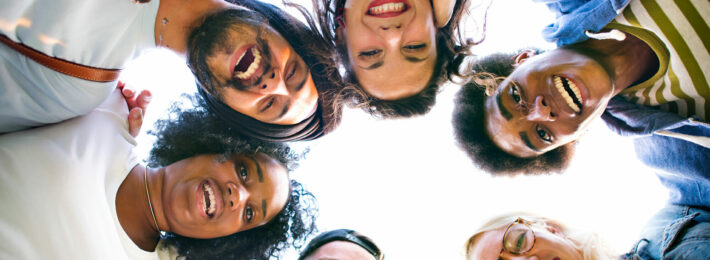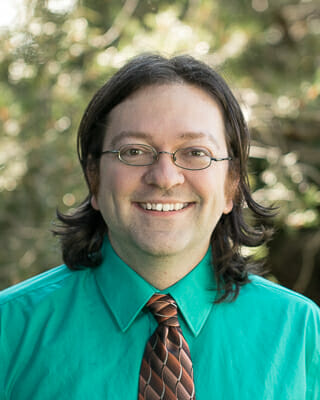
SPOTLIGHT ON INNOVATION SERIES
The US Department of Education has awarded multi-million dollar “First in the World” grants to 24 colleges and universities that are innovating to solve critical challenges with access, recruitment, retention, and student success. At AI, we have interviewed each of the recipients to learn more about the projects these institutions are pursuing, how their approaches are unique, and what other colleges and universities can learn from these new efforts.
Geoffrey (Geoff) Maruyama, the department chair of educational psychology at the University of Minnesota, Minneapolis, has an intriguing — and direct — way of explaining the challenges faced in improving the academic success and persistence of under-represented and lower-income students. He cites Urie Bronfenbrenner’s research on the ecology of human development.
Transformative Learning for First-Generation Students
“Kids grow up in a lot of different ecosystems,” Maruyama notes. “To the extent to which those ecosystems are aligned, life is simple. When you have a bigger transition, however, it gets more complicated. First-generation students are less likely to have grown up in a culture with strong links to higher education, making the transition to a college environment a more significant change.”
A lot of professionals in higher education are discussing how best to bridge the gap between high school and college; for Geoff Maruyama, the critical gap is between college culture and the culture of the community.
“We need to make connections back from the college to the community. It’s critical that first-generation students and their families see the connection between their learning and their community. Often, these students arrive at college with idealism: they are going to get an education and then solve the world’s problems. But they don’t see immediate connection between the classes they’re taking and world problems…or their community’s problems.”
Geoff Maruyama, U of Minnesota, Minneapolis
Maruyama’s commitment is to making classroom learning relevant and active through integrating volunteerism, service learning, and civic engagement. This is a direction he feels will not only benefit first-generation students — by empowering them to achieve and apply their learning within the context of their own communities — but will benefit all students, by providing occasion for the examination of privilege and for translating classroom learning into real-world activity.
For example, the University of Minnesota has established an urban research and outreach center in North Minneapolis, in a high-unemployment zone. Community representatives and faculty and undergraduate student researchers meet there to address shared issues, and the university holds education, public health, and other classes at the center.
Taking the Next Steps: A Unique Partnership
Partnering with five other universities — the City University of New York, the University of California Santa Cruz, the University of Georgia, the University of Illinois Chicago, and the University of Memphis — the initiative Maruyama is spearheading was recently awarded a $2.8 million First in the World grant from the US Department of Education.
The six universities each have seen some success with smaller projects focused on supporting first-gen students or integrating community-based learning experiences within academic programs in a diversity of regions, from New York to Santa Cruz.
Now, the task before them is to pool their knowledge and resources and identify the best opportunities to partner with local communities in offering new educational programming — or refining existing curricula — to serve nearly 9,000 under-represented students across the five institutions.
How They’re Pooling Their Knowledge
“We need to first take the time to understand what we’re each doing,” Maruyama notes, “and how we can each do it better.”
He and his colleagues at partner institutions plan to:
1. ESTABLISH A FORUM
Bring everyone together from five campus for three days, six times over the course of the project (twice during the first year, once the second year, once the third, and twice during the final year of the grant). They plan to invite colleagues from other institutions, as well, holding a symposium or forum to study the critical ingredients in the success of projects that are already serving first-generation students well.
2. DRAFT GUIDELINES
This initial research is intended to produce a set of guidelines for institutions on how to form the most effective and productive bridges with target communities. These guidelines will be made publicly available.
For example, one guideline might focus on taking the time to build relationships and establish trust. “If you go into the community well-intentioned but don’t take the time up front to build the relationships you need,” Maruyama cautions, “it may not be a positive experience for either the community or the student researcher or the teacher.”
3. CONDUCT 6 CASE STUDIES
“We need to think of ourselves as six individual case studies,” Maruyama suggests. “We need to find what’s common across our own successes. What would we recommend to other institutions? What can we try that’s new?”
That is what they are going to be discussing throughout this year.
Why You Should Watch This Project
The shift in demographics toward first-generation students is one of the adaptive challenges facing higher education. Addressing challenges like this one will require collaboration between institutions and communities, because the issue is too complex and involves too many moving parts for a single department at a single campus to solve effectively. (See our article “Higher Ed is Facing Adaptive Changes.”)
At AI, one of the things that excites us most about the effort Geoff Maruyama is heading is its potential for serving as a laboratory for developing this kind of collaborative initiative. We hope that it is very successful — and that it serves as a model for similar college-community collaborations, involving multiple institutions, across the country.
We will be watching the University of Minnesota’s project closely!


